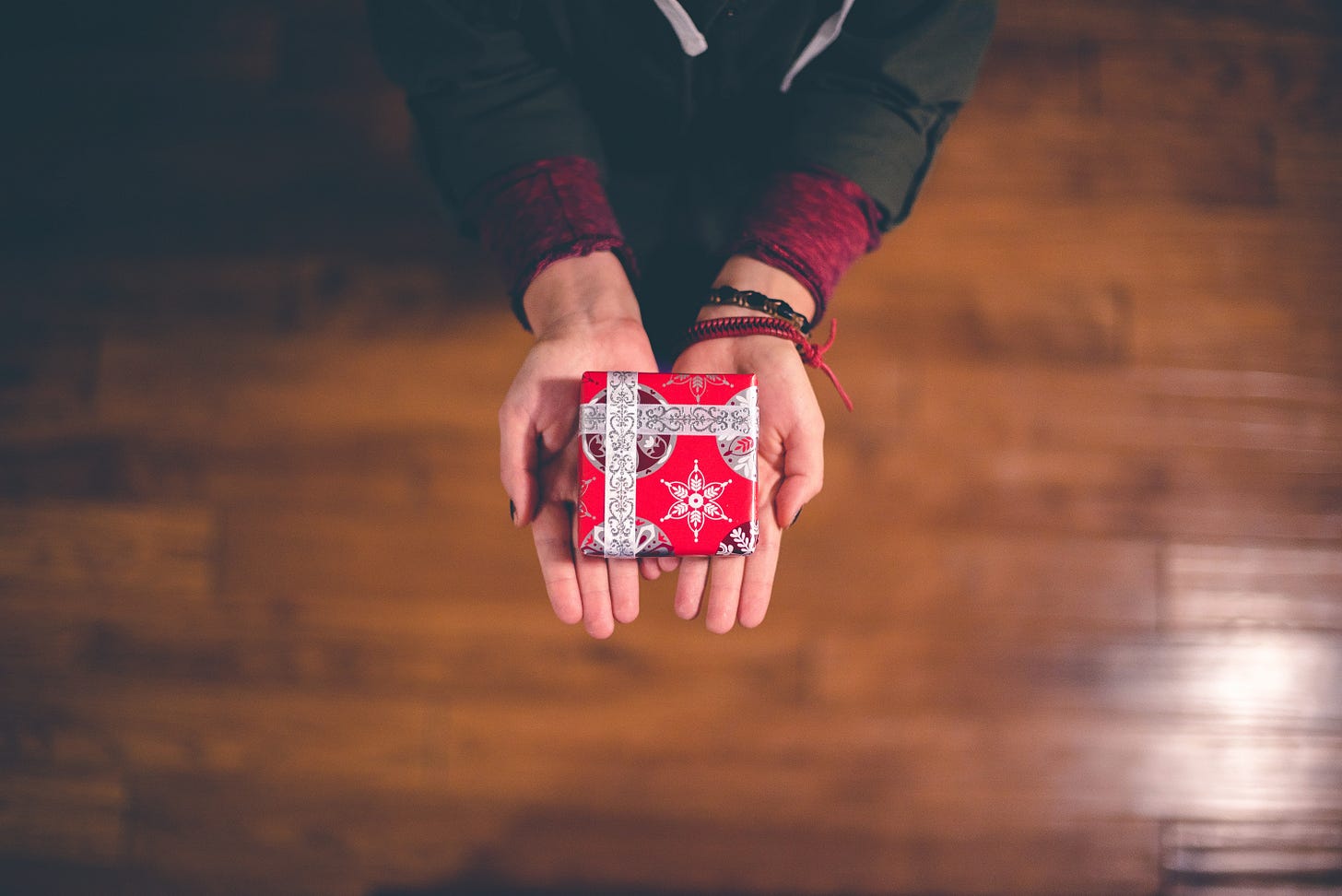There is nothing quite like receiving a heartfelt gift. We all feel appreciated and remembered when given a present, no matter how small. But how closely do we observe its timing and presentation - is there an etiquette to gift-giving?
Japan is a country with such an etiquette. From when it is appropriate to how many gifts to give, there are many rules to follow.

There is a time and place for everything
Whereas in the UK, Christmas is the time for gifts, Japanese people rarely celebrate this holiday with the same enthusiasm. In recent years, it has become more popular, particularly among young people, but gifts are not often thought of as part of the celebrations. Although, it is not uncommon for children to receive presents and couples to buy something for each other during this time.
While these differ greatly from what we know in the West, there are many occasions to give and receive gifts in Japan.
Omiyage
Though it means souvenir, omiyage is not meant for yourself. It is traditional to bring small presents back to colleagues, friends and family when you return from a trip for business or holidays. These ordinarily take the form of small confectionery or alcohol from the place you visited.
The tradition of omiyage dates back to the Edo period (1600-1868). During this time, it was uncommon, but not unheard of for people to go on pilgrimages, and those who went would bring souvenirs for their fellow villagers who weren’t able to go. The custom is now seen everywhere in Japan, and it is not unusual to see specialty shops in airports and near train stations.
It is also popular to give meibutsu, local specialities from each region of Japan. These can be different foods and drinks, but also clothes, cultural artefacts or traditions. It is common to buy meibutsu gifts as omiyage. So much so that in big cities, such as Tokyo, it is not hard to find shops selling meibutsu from many different regions, perfect for people who forgot to buy presents on their travels.
Ochugen and Oseibo
Twice a year, there is a seasonal tradition of gift-giving in Japan, ochugen in the summer and oseibo in the winter.
The practice of ochugen comes from a mixture of Taoist and Buddhist beliefs, originally presenting gifts to deceased relatives for the Bon festival. Nowadays, ochugen celebrates the living. For the first two weeks of July, people in Japan give presents to show gratitude to the people around them. This could be to their close friends, family, and colleagues, or even teachers and superiors.
These are gifts to thank those who you feel indebted to. Most of these are food, often from the region the donor is from. However, the presentation is just as important as what is given, with beautiful wrappings packaging the contents. These wrappings are usually made of noshigami, distinct Japanese wrapping paper.
Similarly, oseibo originated from the custom of placing offerings on the graves of ancestors. Oseibo gifts are intended as an expression of gratitude towards people who have helped you throughout the year, such as relatives, superiors at work or clients. However, the tradition of oseibo has been losing support, with younger generations often not taking part at all. This has been attributed to the gift-giving stemming from a sense of obligation, as opposed to a Christmas present which is seen to be more personal and modern.

It’s more than just the intention
It is not enough to bring back omiyage after a trip, or have a thoughtful present prepared for ochugen. Once you know when it is appropriate to give a gift, knowing the etiquette of gift-giving becomes important.
As mentioned above, Japanese traditional presents tend to be small, usually food or drink, so that the person receiving the gift does not feel burdened. The price of the gift, while not insignificant, is not the main aspect to focus on. In Japan, it’s the presentation that is important, and gifts are usually given in beautiful wrapping paper and decorations. The colour of the wrapping tends to be pastel, as bright colours are commonly thought of as ostentatious.
Additionally, the number of gifts given is also something to watch out for. Gifts given in pairs are considered to be lucky, but Japanese people avoid the numbers 4 and 9, as they are associated with death, and as such are to be avoided.
Furthermore, whether giving or receiving a gift in Japan, it is traditional to use both hands to hold the parcel, as a sign of respect. It is also essential to pick your moment appropriately, as Japanese gift-giving should not be rushed, presents are given at the end of a meeting, never as an introduction.
Gifts are also meant to be private. It is considered rude to give out a present to only one person in front of many people. They are also not meant to be open in public, not even in front of the gift-giver.
Whether it’s omiyage or ochugen, giving a heartfelt gift to a loved one shows appreciation when words fall short. In a culture ruled by etiquette and tradition like Japan, even these small gestures of gratitude have their own pomp and ceremony. Knowing what to give someone as a present is tough in the simplest of circumstances, much less with all the added complications of etiquette and timing. But it is in the small actions that care and dedication is observed.
What gifting traditions do you observe?



